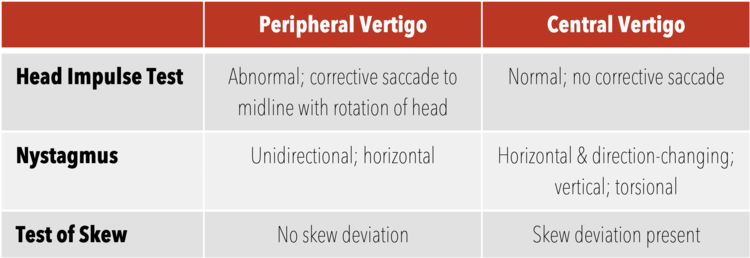“Pressors” in Distributive Shock in Adults
Thank you, Dr Dastmalchi, for requesting this POTD. I will review “pressors” for cardiogenic shock separately
Vasopressors- Pure vasoconstriction without any inotropy eg Phenylephrine and Vasopressin
Inotrope- Increase cardiac contractility à improving SV and cardiac output without any vasoconstriction eg Milrinone
Inopressors - a combination of vasopressors and inotropes, because they lead to both increased cardiac contractility and increased peripheral vasoconstriction eg Norepinephrine, Epinephrine and Dopamine
Norepinephrine- Inopressor
First line vasopressor in septic shock per Surviving Sepsis Guidelines
Less arrhythmogenic than Epinephrine and Dopamine
Mechanism of action
Stimulates alpha-1 and alpha-2 receptors
Small amount of beta-1 agonist- modest inotropic effect
Increased coronary blood flow and afterload
Increases venous tone and return with resultant increased preload
Adverse effects
Norepinephrine is considered safer than both Epinephrine and Dopamine.
ARR of 11% compared to dopamine with NNT 9
NE superior in improving CVP, urinary output, and arterial lactate levels compared to Epinephrine, Phenylephrine, and Vasopressin.
Indications
First-line pressor choice in distributive shock, including both neurogenic and septic shock
Norepinephrine as the only first-line pressor per SSC guidelines
Dosing
Use weight-based dosing to avoid the adverse effects associated with norepinephrine use
Weight-based dosing is based on GFR
Norepinephrine has a rapid onset of action (minutes) and can be titrated every 2-5 minutes
Epinephrine- Inopressor
Mechanism of action
Beta-1 and beta-2 receptors agonism à more inotropic effects than norepinephrine
Epinephrine greatly increases chronotropy (heart rate) and thus stroke volume
Some stimulatory effect on alpha-1 receptors
Lower doses (1-10 mcg/min) à a beta-1 agonist
Higher doses (greater than 10 mcg/min) à an alpha-1 agonist
Adverse effects
Associated with an increased risk of tachycardia and lactic acidosis
Hyperglycemia
Increased incidence of arrhythmogenic events associated with epinephrine
More difficult use lactate as a marker of the patient’s response to treatment
Indications
SSC guidelines recommend epinephrine as a second-line agent, after norepinephrine
“push-dose pressor”
Due to beta-2 receptors agonism causing bronchodilation, epinephrine is first-line agent for anaphylactic shock
Dosing
Guidelines for anaphylactic shock recommend an initial bolus of 0.1 mg (1:10,000) over 5 minutes, followed by an infusion of 2-15 mcg/min however associated with adverse cardiovascular events
For septic shock start epinephrine at 0.05 mcg/kg/min (generally 3-5 mcg/min) and titrate by 0.05 to 0.2 mcg/kg/min every 10 minutes. maximum drip rate is 2 mcg/kg/min
Dopamine- Inopressor
Fallen out of favor
Associated with higher arrhythmogenic events
Mechanism of action
Effects are dose-dependent
Low doses à dopaminergic receptors à leads to renal vasodilation à increased renal blood flow and GFR although studies failed to demonstrate improved renal function with dopamine use clinically
Moderate doses à beta-1 agonism à increased cardiac contractility and heart rate
High doses à alpha-1 adrenergic effects à arterial vasoconstriction and increased blood pressure
Adverse Effects
Several large, multi-center studies that demonstrate increased morbidity associated with its use
Significantly higher rates of dysrhythmias à NNH 9
Indications
Rescue medication when shock is refractory to other medications
Dosing
Start at 2 mcg/kg/min and titrate to a maximum dose of 20 mcg/kg/min.
Less than < 5 mcg/kg/min à vasodilation in the renal vasculature
5-10mcg/kg/min à beta-1 agonism
10 mcg/kg/min à alpha-1 adrenergic
Vasopressin- Vasopressor
Add vasopressin (doses up to 0.04 units/min) to norepinephrine to help achieve MAP target or decrease norepinephrine dosage
Restore catecholamine receptor responsiveness, particularly in cases of severe metabolic acidosis.
pH independent
Pure pressor à increase vasoconstriction with minimal effects on chronotropy or ionotropy
Mechanism of action
At low doses (< 0.04 units/min) à increases vascular resistance (V1)
No effect on heart rate and cardiac contractility
Adverse Effects
Vasopressin has been shown to be as safe as norepinephrine at lower doses
Increases SVR and afterload and decreases cardiac output although unclear if effect significant at lower doses
Indications
Second line vasopressors per SSC guidelines for septic shock
pH independent- Vasopressin in combination with epinephrine demonstrated improved ROSC in cardiac arrest patients with initial arterial pH <7.2 compared with epinephrine alone
Dosing
Steady dose at 0.03-0.04 units/min
Vasopressin is not titrated to clinical effect as are other vasopressors
Think about it more as a replacement therapy and treatment of relative vasopressin deficiency
Phenylephrine- Vasopressor
Pure pressor à increase vasoconstriction with minimal effects on chronotropy or ionotropy
SSC guidelines does not make rated recommendations on Phenylephrine
Limited clinical trial data
Mechanism of action
α1 agonism with peripheral vasoconstriction
Adverse Effects
Bradycardia - decrease in heart rate mediated by the carotid baroreceptor reflex 2/2 increase in SVR
Increases SVR and afterload and decreases cardiac output
Indications
Patients that are susceptible to beta-adrenergic generated arrhythmia
Push dose formulation
Refractory shock
Dosing
0.1-2mcg/kg/min (onset: minutes, duration: up to ~20 minutes)
References:
Pollard, Sacha, Stephanie B. Edwin, and Cesar Alaniz. "Vasopressor and inotropic management of patients with septic shock." Pharmacy and Therapeutics 40.7 (2015): 438.
Amlal, Hassane, Sulaiman Sheriff, and Manoocher Soleimani. "Upregulation of collecting duct aquaporin-2 by metabolic acidosis: role of vasopressin." American Journal of Physiology-Cell Physiology 286.5 (2004): C1019-C1030.
Khanna, Ashish, and Nicholas A. Peters. "The Vasopressor Toolbox for Defending Blood Pressure."
Turner, DeAnna W., Rebecca L. Attridge, and Darrel W. Hughes. "Vasopressin associated with an increase in return of spontaneous circulation in acidotic cardiopulmonary arrest patients." Annals of Pharmacotherapy 48.8 (2014): 986-991.


